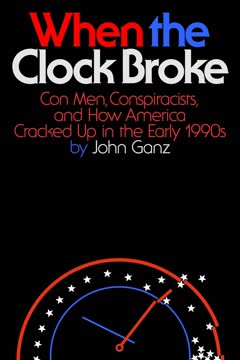Key Takeaways
1. Rural America is Defined by Crisis and Myth, Obscuring Reality
When we talk about rural America, we find ourselves caught between the language of crisis and the language of myth.
Perpetual crisis. Rural America is consistently described as being in a state of crisis, a narrative that has persisted for over a century. This includes economic decline, social issues like opioid addiction and suicide, and a sense of being "left behind" due to lack of resources like high-speed internet. However, this "crisis" is more accurately a chronic condition, a recurring theme rather than a temporary disruption.
Agrarian myths. The idealized image of rural America, often rooted in the Jeffersonian yeoman farmer, clashes with the reality of modern rural life. This myth emphasizes self-sufficiency, virtue, and a close connection to nature, but it ignores the commercial orientation, financial savvy, and market dependence of rural communities. This nostalgia for a "normal" rural America prevents a clear understanding of current challenges.
Need for clarity. The language of crisis and myth obscures the true forces shaping rural America. By sidestepping these tropes and examining the impact of militarization, industrialization, corporatization, and suburbanization, a more accurate picture of rural America emerges, one that acknowledges its complex relationship with the rest of the nation.
2. Militarization Profoundly Shapes Rural Landscapes
From the very beginning of the nation, therefore, much of what we now call rural America was a militarized space.
Military presence. The U.S. military has a long and enduring presence in rural America, dating back to the frontier era when troops were used to displace Indigenous populations. This militarization continues today through military bases, training facilities, and the activities of the Army Corps of Engineers, which has reshaped waterways and landscapes.
Army Corps of Engineers. The USACE has significantly altered rural landscapes through projects like dams, canals, and levees. These projects, while intended for flood control and economic development, have often resulted in environmental degradation, social dislocation, and the destruction of Native American lands. The Kinzua Dam, which flooded Seneca Nation land, exemplifies this impact.
Addiction to the military. Rural communities have become economically dependent on military installations, leading to a cycle of reliance on military spending and jobs. This dependence can shape local politics and create a strong sense of military identity, sometimes at the expense of other values or economic opportunities.
3. Industrialization Has Been a Long-Sought but Uneven Rural Savior
A national rural development program must encourage industries to locate their plants in rural areas.
Decentralization efforts. The idea of moving industry from urban centers to rural areas has been a recurring theme in American history, particularly during the New Deal era. This was seen as a way to revitalize struggling rural economies, provide jobs, and balance the concentration of industry in cities. However, these efforts have had mixed results.
Auto industry example. The auto industry's move into rural areas, exemplified by GM's Lordstown plant and Honda's Ohio facilities, illustrates the complexities of rural industrialization. While these plants brought jobs and economic activity, they also introduced new challenges, such as labor disputes and environmental concerns.
Deindustrialization's impact. Rural areas are not immune to deindustrialization. The closure of plants like the GM factory in Lordstown demonstrates the vulnerability of rural economies to shifts in manufacturing and the challenges of replacing lost jobs and revenue. This can lead to blight and economic hardship.
4. Corporatization Has Transformed Rural Economies and Social Structures
In spite of all the pleas for home-town loyalty and all the claims of economic solidarity within local communities, purchasing habits reveal a different story.
Cooperative movement. Agricultural cooperatives emerged as a way for farmers to collectively market their products and gain more control over the supply chain. The Capper-Volstead Act of 1922 provided legal protections for these co-ops, but it also raised questions about their potential for monopolistic practices.
Corporate farming fears. Concerns about corporate ownership of farmland have been a recurring theme in American history. While some states have passed laws restricting corporate ownership, the vast majority of corporate farms are actually family-held corporations, blurring the lines between traditional family farms and large-scale corporate operations.
Chain retail dominance. Chain stores, like Woolworth's, Penney's, Walmart, and Dollar General, have played a significant role in shaping rural economies and consumer culture. While they provide access to affordable goods and services, they can also displace local businesses and contribute to a sense of homogenization.
5. Suburbanization Redefines Rural Spaces and Politics
What I think is happening is that rural and urban are meeting under a variety of conditions and in a variety of ways.
Suburban growth on farmland. Postwar suburban development has largely occurred on agricultural land, transforming rural landscapes into residential and commercial areas. This process has displaced farmers, altered land use patterns, and created new social and economic dynamics.
Two-way migration. Suburbanization is not solely an urban phenomenon. Rural residents have also migrated to suburban areas, seeking economic opportunities and a different way of life. This influx of rural people has shaped the social and political character of the suburbs.
Political consequences. The mixing of urban and rural populations in the suburbs has created new political tensions, particularly around issues like taxation, land use, and government regulation. These tensions have contributed to the rise of conservative politics in suburban areas.
6. The Rural-Urban Dichotomy is a Continuum, Not a Clear Divide
The traditional rural-urban dichotomy has become a continuum.
Blurring lines. The traditional distinction between rural and urban areas is increasingly blurred. Instead of viewing them as separate entities, it's more accurate to see them as points on a continuum, with varying degrees of density, economic activity, and social interaction.
Rural as a component of urban life. Rural areas are not isolated or independent but rather integral parts of a larger urban society. They provide resources, labor, and recreational opportunities, while also being influenced by urban trends and policies.
Need for new perspectives. The limitations of the rural-urban dichotomy call for new ways of understanding the relationship between these spaces. By focusing on density, connectivity, and the flow of resources, a more nuanced and accurate picture of rural America emerges.
7. Nostalgia and Discontent Fuel the Politics of Post-Rural America
No matter what competing purpose [the myth] has served, it has achieved the same result: exacerbating the fundamental challenge of comprehending the world by insisting on fixity instead of flux, insularity instead of interdependence.
Yearning for a lost past. Many Americans, both urban and rural, hold a nostalgic view of rural life, imagining it as a simpler, more virtuous, and more authentic way of living. This nostalgia can lead to discontent with the realities of modern rural life and a desire to return to an idealized past.
Political implications. The disconnect between myth and reality fuels political anger and resentment in rural America. This anger is often directed at urban elites, government regulations, and other perceived threats to rural values and ways of life.
Need for understanding. To have productive conversations about the future of rural America, it's essential to move beyond simplistic narratives and acknowledge the complex forces shaping these spaces. By understanding the true nature of rural America, we can develop more effective policies and strategies for addressing its challenges.
Last updated:
Review Summary
The Lies of the Land challenges myths about rural America, arguing it's shaped by the same forces as urban areas. Conn examines militarization, industrialization, corporatization, and suburbanization's impact on rural spaces. Reviewers praise the book's insightful analysis and thought-provoking content, noting how it dispels romanticized notions of rural life. Some found parts dry but appreciated the historical context and witty observations. The book resonated with readers from various backgrounds, offering a fresh perspective on rural-urban dynamics and the complexities of American identity.
Similar Books







Download PDF
Download EPUB
.epub digital book format is ideal for reading ebooks on phones, tablets, and e-readers.




